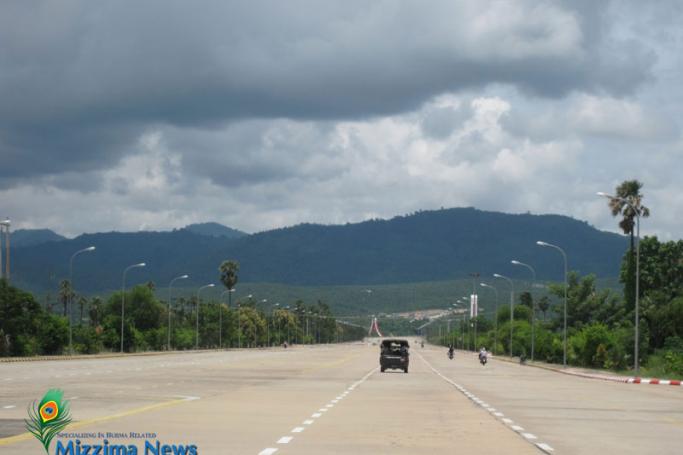Despite continuous reform efforts started since 2010, Myanmar is still a weak state struggling from the political instabilities, decade-long unsettled conflicts and below average economic performance. These weaknesses of Myanmar can be measured according to two critical challenges: regime change and security challenges.
The first challenge, regime change, is what Myanmar has to encounter due to the ongoing democratisation, which is accompanied by weak state institutions and lack of domestic legitimacy. Along with the regime change, new state institutions are not fully developed and mature yet, which is facing the lack of institutional capacity and leads to the impotent of adequate response to the public and democratic demands. Moreover, the lack of full domestic legitimacy leads to frustrated nationwide political ambitions, the potential of threats, and insufficient rule of law.
The second challenge, security challenge, is accompanied with the leverage of military and many decades of civil conflicts. The military has been and still is a dominant player to the perceptions of Myanmar people in general and democratisation due to its strong political and economic roles and assertive conflicts management. Historically, the behaviour of the military to the internal conflicts has been a serious threat that is linked to the second security challenge: decades-long civil wars between ethnic armed groups and the military. The lack of trust between the two latter result in intense tensions that are considered as a serious threat not only to national but also to regional stability. Due to these domestic political challenges, Myanmar appears vulnerable, and accordingly, Myanmar behaves as a weak state in the international arena.
From 2011 onwards, Myanmar is behaving differently as it is experiencing new challenges and opportunities. Myanmar seeks foreign aid and economic assistance; employs economic and diplomatic foreign policy; focuses on strategic cooperation and actively engages with international organizations; balances, manages and expands relations; acts in passive and reactive mode; adopts people-cantered foreign policy approach; engages in people-to-people diplomacy and demonstrates its higher degree of commitment and legitimacy in international arena. Although there are promising changes, Myanmar still behaves like a weak state.
Myanmar’s foreign policy behaviours are best to be explained based on the understanding of three sets of strategies: hedging, engagement and balance of power. In hedging strategies, Myanmar’s behaviour is occupied with the strategies called “wait and see” and “betting on both sides”. These strategies allow Myanmar to evade direct conflict with major powers by avoiding implementing the straightforward policies that favour only one major power. The engagement strategies explain Myanmar’s behaviour as a more active foreign policy approach in engaging the international community, multilateral cooperation and encouraging major powers to focus on constructive relations. The last set of strategies highlights Myanmar’s behaviour when it attempts to normalise the damaged and strengthen the good bilateral ties.
In order to link Myanmar’s weaknesses and its foreign policy behaviours, analyses are explained at two levels: the state level analysis and the systemic level analysis.
At the state level analysis, internal factors such as regime change, state institutions, lack of legitimacy and security concerns shape Myanmar’s foreign policy behaviour by influencing the foreign policy approaches of the government when it responds to the internal demands and external pressures. For instance, Myanmar pursues hedging strategies to avoid the U.S’s pressure on the human rights issues or to reduce its over-reliance on China. Furthermore, Myanmar approaches engagement strategies for establishing multilateral cooperation and constructive ties in order to access foreign aids and economic assistance.
At the systemic level analysis, Myanmar’s strategic environment is changing as all the major powers have the intention to use Myanmar as a strategic buffer for their countries’ interests. In order to confront the strategic weight, Myanmar has to be very cautious with its alignment behaviour. In this sense, Myanmar cultivates itself in the middle position and balance relations to avoid the risk of becoming a satellite state of one major power in the region. Hence, this behaviour interprets that Myanmar practices hedging and engagement strategies as it maintains good relations with all major powers.
Regarding this international posture of Myanmar, there are three policy recommendations. The first one is that Myanmar’s foreign policy should focus on the strategies that seek foreign assistance in order to improve domestic conditions and political stability. The second is that Myanmar should favour hedging strategies as there will be more space and strategic options, and less external pressure. The third recommendation is that Myanmar should be more active in multilateral cooperation, and encourage the major powers to increase their cooperation in the country instead of competing against each other.
Saw Tha Wah recently completed his master in International Law and Diplomacy at the Assumption University of Thailand. He is currently contributing research papers at Myanmar Institute of Strategic and International Studies.
All views expressed in this article are his own and do not reflect the views of Myanmar ISIS or the Ministry of Foreign Affairs. His research paper on “Explaining Myanmar’s Foreign Policy Behavior: Domestic and International Factors” has been published online by the Myanmar Institute of Strategic and International Studies (MISIS) as part of a joint project by MISIS and the Norwegian Institute of International Affairs. It can be accessed through www.myanmarisis.org.
You are viewing the old site.
Please update your bookmark to https://eng.mizzima.com.
Mizzima Weekly Magazine Issue...
14 December 2023
Spring Revolution Daily News f...
13 December 2023
New UK Burma sanctions welcome...
13 December 2023
Spring Revolution Daily News f...
12 December 2023
Spring Revolution Daily News f...
11 December 2023
Spring Revolution Daily News f...
08 December 2023
Spring Revolution Daily News f...
07 December 2023
Diaspora journalists increasin...
07 December 2023
Myanmar Suu Kyi supporters blocked from campaigning in Thailand












